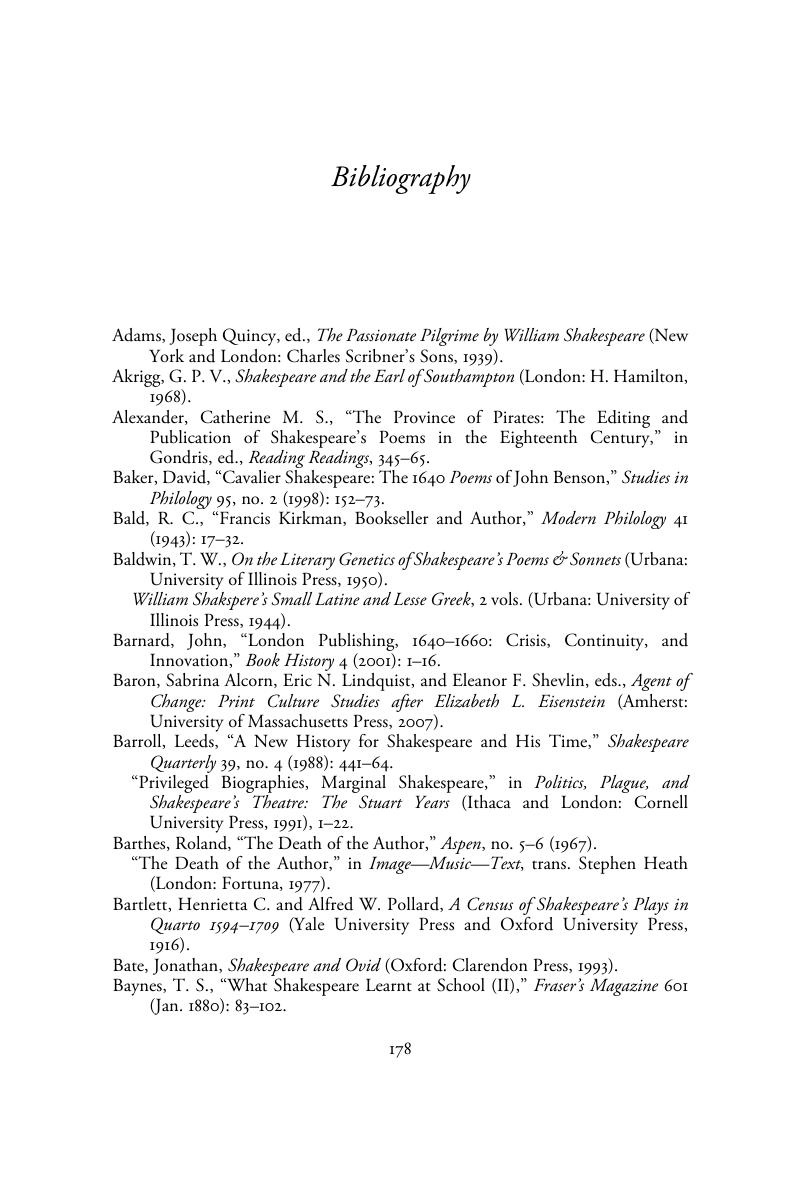Bibliography
Published online by Cambridge University Press: 05 February 2016
Summary

- Type
- Chapter
- Information
- Selling ShakespeareBiography, Bibliography, and the Book Trade, pp. 178 - 193Publisher: Cambridge University PressPrint publication year: 2016



